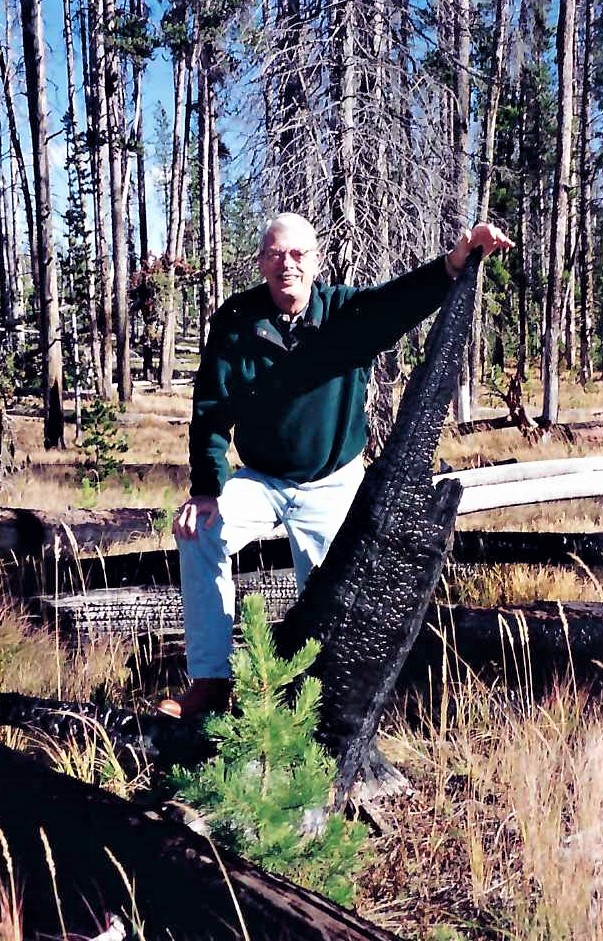Commentary
When I read the headline, “Our national parks could be at higher risk from climate change,” over a column by Jean Meiners, climate reporter for the left-leaning Arizona Republic, my skepticism clicked in, but not just because I am tired of the left’s scare tactics. Why would our national parks be at higher risk?
Meiners’ piece was the result of her reading a book by former park ranger Michael Yochim, “Requiem for America’s Best Idea: National Parks in the Era of Climate Change.” It seems he decided to write about his experiences in 2013, but when he was diagnosed with ALS (Lou Gehrig’s disease) about the same time, he thought he would relate it to how our national parks are increasingly afflicted by climate change.
It’s too bad. His years of park experiences might have been interesting if it didn’t include lines like these: “If we don’t curtail our carbon emissions soon – and radically curb them, my experience may well become the universal experience.” and “Will our actions reflect us at our best – or at our worst, as it currently appears.”
Meiners calls it a “wrenching read,“ as he describes his “worsening symptoms in parallel with lyrical observations of what we stand to lose in five of our most beloved national parks if climate change goes untreated.” Untreated?
He wrote of pilgrimages to two of his favorite parks – Yellowstone and Yosemite – as his disease worsened, reflecting on the toll that wildfires and drought has wrought, claiming they were exacerbated by climate change. Human-caused climate change, of course.
Personally, I visited Yellowstone in 1997, less than a decade after the great fires of 1988, and recall reading about its volcanic history. I still have the brochure that describes catastrophic eruptions two million years ago, then 1.2 million years later, and then again 600,000 years ago. Cyclical, I’d say, even that long ago.
Yellowstone normally has afternoon showers three or four days each week in the summer, but in 1988 there was no measurable rain after June during the three-month fire.
I remember seeing the acres of gray sticks pointing into a blue sky during my visit. It was kind of surreal. But there were new trees already growing amid them. I also remember seeing bison roaming along side the road. Only nine bison perished in the fire, but 246 elk were not so fortunate.
What isn’t widely known is the fact that the fires that destroyed 36 percent of Yellowstone, primarily caused by lightning, were initially allowed to burn themselves out, a practice in previous years. Between 1972 and 1987, the average fire went out naturally, burning about an acre.
Midway through the 1988 burn, however, that changed and all fires were fought as the park service changed its fire management policy.
You may recall former President Trump’s admonishment of California officials for not practicing proper forest management to protect areas of wildfire activity.
In 2019, I visited the park at Mount St. Helens, where its 1980 eruption released 24 megatons of thermal energy, producing temperatures over 800 degrees Fahrenheit devastating over 90-square miles of forest habitat. Ironically, the eruption lowered the global average temperatures by roughly 0.1 degrees Celsius
Soon there was a fivefold increase in lake and pond habitats, and trees are again flourishing.
I simply cannot get excited with Yochim’s statement that “Many national parks are warming much faster than the rest of the country – 1.3 degrees Fahrenheit per century (yes, per century) compared to 0.7 degrees nationwide – due to their locations in vulnerable Arctic, high elevation, and southwestern desert ecosystems.
Meiners included the obligatory reference to the latest report of the UN Intergovernmental Panel on Climate Change, in which “the world’s top scientists say the time is right to ramp up action to curb global greenhouse gas emissions,” in paragraph 20 of her column. The IPCC is funded primarily by the U.S., thanks to Biden’s return to the Paris Accord.
Now, more than ever … may God continue to bless the United States of America.







